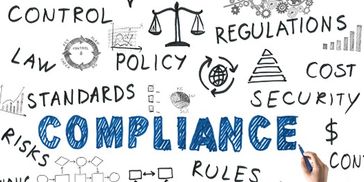Guidance and Solutions

Guidance and Solutions

Bold Competence
.jpg/:/rs=w:365,cg:true,m)
Who - How - What
How We Work

NAVSEA Supplier
• Audits & Gap Analysis to determine compliance and progress towards NAVSEA standards, codes, and requirem
NAVSEA Supplier
• Audits & Gap Analysis to determine compliance and progress towards NAVSEA standards, codes, and requirements.
• Turn-key and Business ready NAVSEA welding and fabrication shops, departments, and business units.
• Quality Management System development and upgrades to comply with NAVSEA standards, codes, and requirements.
• Inspection Personnel NDT/NDE training, audits, support, and Qualification IAW NAVSEA TP271 and NAVSEA 250-1500.
• Development, Training, and certification of personnel in Workmanship/Craftmanship, and Welder Workmanship.
• Welding Procedure (WPS) and Procedure Qualification (PQR) development and certification IAW NAVSEA TP248.
• NAVSEA Welding and Advanced NAVSEA Welding Training and Certification Programs with NAVSEA certified PQRs.
• NAVSEA Brazing and Soldering Training and Certification.
• Welder Workmanship Programs, and Processes & Procedures as required by NAVSEA code or standard.

ARGYLL is a certification body offering Second Party Certification to Quality Management Systems and Customer Standards
What is Second Party Certification?
Second party certification is a certification issued by either a customer or interested party associated with the business being certified. The audit is performed using the Standard a
ARGYLL is a certification body offering Second Party Certification to Quality Management Systems and Customer Standards
What is Second Party Certification?
Second party certification is a certification issued by either a customer or interested party associated with the business being certified. The audit is performed using the Standard and the Business's documentation as audit criteria. It is an audit of the Business's compliance with the audit criteria. Second party certification complies with the requirements of the International Organization of Standardization (ISO). ARGYLL second party audits are carried out in compliance with auditing requirements ISO 19011:2017 as well as other Defense and NAVSEA requirements.
What is the Difference between Second Party and Third-Party Certification?
A second party auditor is permitted to make suggestions that will improve the business's management system and make suggestions as to how to correct nonconformity. The second party auditor may not insist on their suggestions or corrections being implemented. Thus, allowing the business to incorporate their own thoughts and maintain ownership of the system. A third party is not permitted to assist the business being audited in any way.
Are Third Part Auditors Superior to Second Party Auditors?
At QSDR our auditors have the exact same training as third-party auditors. However, ARGYLL auditor experience exceeds that of most third-party auditors. All ARGYLL auditors are experienced in establishing, managing and maintaining the management systems that they audit. Their experience is used to ensure their clients not only comply but operate an effective and efficient system making them superior to many businesses with third party certifications. All ARGYLL Auditors have certificated training through SAE for both AS 9100 and IATF 16949.
Which is Best for My Business?
Second party is best for your business if want value added auditing that helps you to improve and grow your business. Second party gives your business the advantage of professional assistance making you a better supplier to your customers.
What Standards are ARGYLL Qualified to Audit?
ISO 9001:2015, AS 9100:2016, IATF 16949, ISO 17025, ISO 14001, ISO 13485, NAVSEA S9074-AQ-GIB-010/248, NAVSEA S9074-AR-GIB-010/278, NAVSEA 0900-LP-001-7000, MIL-STD-1689A, NAVSEA T9074-AD-010-1688, NAVSEA 250-1500-1 Welding Standard, NAVSEA T9074-AS-GIB-010/271, MIL-STD-2035, General Dynamics - EB Spec. 2678 Quality Control, PPD 802-7094529 (Newport News Shipbuilding) es

Aligned Procedure Development with Organizational Goals
The alignment of procedure development with organizational goals is not merely a best practice but a necessity for sustained success.
Procedures, the backbone of daily operations, can either propel a company towards its objectives or hinder its progress.We address the intricacies of
Aligned Procedure Development with Organizational Goals
The alignment of procedure development with organizational goals is not merely a best practice but a necessity for sustained success.
Procedures, the backbone of daily operations, can either propel a company towards its objectives or hinder its progress.We address the intricacies of achieving this alignment, offering actionable insights, illustrative examples, and a strategic framework.
Imperative of Alignment
Organizational goals are the guiding stars that steer a company’s trajectory. They encapsulate the desired outcomes, be it increased market share, enhanced customer satisfaction, or improved operational efficiency.
Procedures, on the other hand, are the step-by-step instructions that govern how tasks are executed within an organization.
When these two elements are harmonized, a synergistic effect is created, where every action taken contributes to the realization of the broader vision.
Strategic Framework for Alignment
Achieving alignment between procedure development and organizational goals necessitates a systematic approach. A strategic framework that can serve as a roadmap, guiding organizations through the process and ensuring that every step taken is purposeful and effective.
Organizations Leadership
Technical
Supply Chain
Information Systems
Specialty & Standards
Our Experience is from clients in multiple industries, with many high-value outcomes.
Multiple Industries
· Produc
Organizations Leadership
Technical
Supply Chain
Information Systems
Specialty & Standards
Our Experience is from clients in multiple industries, with many high-value outcomes.
Multiple Industries
· Product Development
· High-volume Manufacturing
· Specialized Fabrication
· Metal Forming
Multiple Clients
· OEM
− Traditional
− New
− Foreign-Owned
· Tier One Suppliers
· Consulting Services
High-Value Circumstances
· Management Assessments, Coaching and Development
· Organizational Due Diligence
· Reorganization and Restructuring
· Culture and Change Management
· Operations Performance Improvement
· New Operations
· Emergence from Divestiture or Bankruptcy
Our Impact We bring
We Create
Impact on People:
You Get
Industries